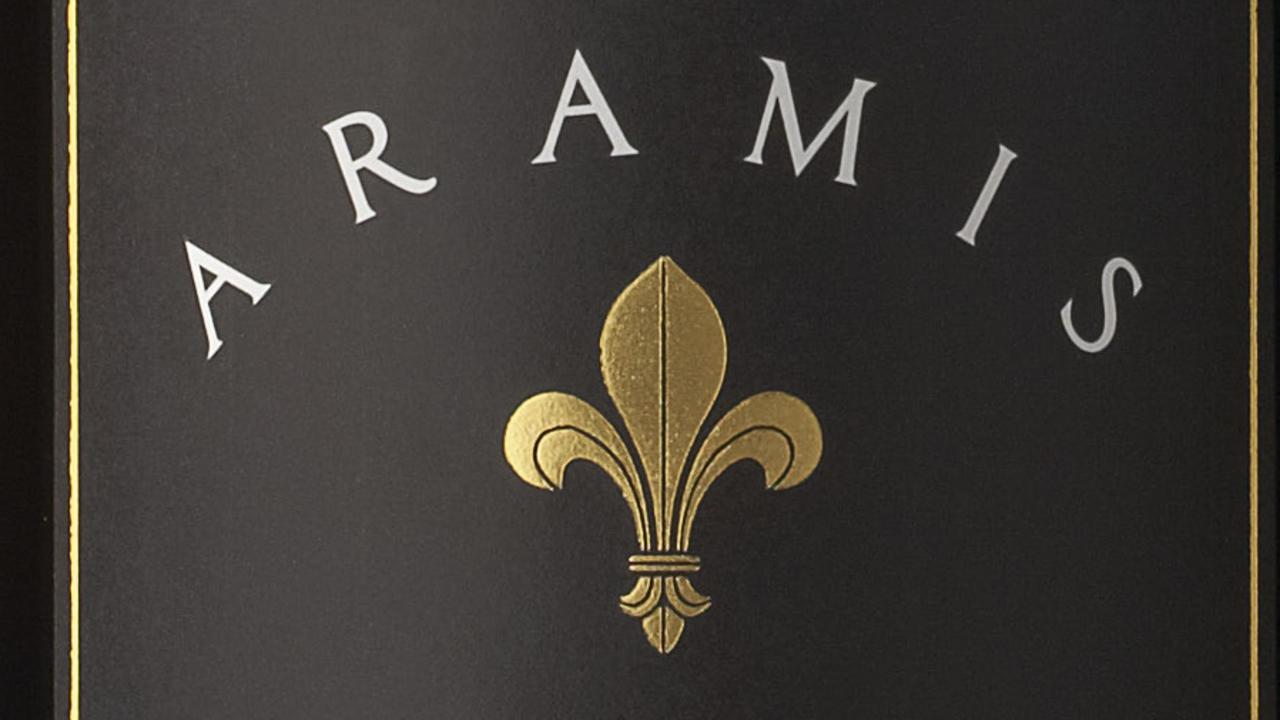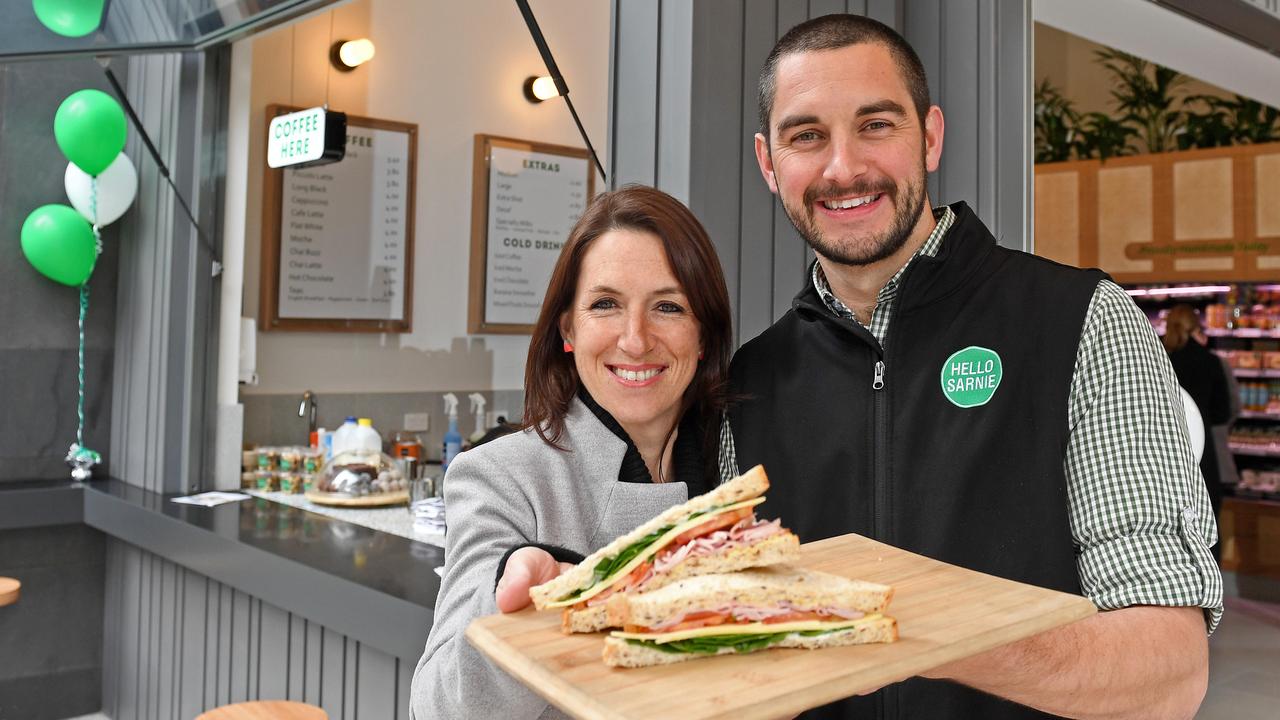Shobosho’s Adam Liston reveals the secret of cooking yakitori grilled chicken
Carefully prepared morsels of chook are impaled on skewers and grilled over coals. It sounds simple but, as two leading exponents show, there is more to yakitori than meets the eye.

delicious SA
Don't miss out on the headlines from delicious SA. Followed categories will be added to My News.
At its core, it’s just chicken on a stick. But so as sashimi is just raw fish, or tempura just battered veg, like other elements of Japanese cuisine, sure it’s that, but it’s so much more.
Yakitori is grilled chicken, elevated to culinary art.
Canadian chef Matt Abergel has spent years learning and perfecting yakitori – Japanese chicken skewers cooked over coal – at Hong Kong’s acclaimed Yardbird restaurant.
The chef’s obsession with chicken began when he was a young boy, cooking chook over hot coals every weekend during summer holidays.
But it was during his time spent at Masa, New York’s temple of sushi, that he ironically perfected this cooking technique by serving yakitori for his boss, Masayoshi Takayama, for staff meals.

“For me, yakitori is a really pure expression of Japanese food, while still being accessible and fun,” Matt says.
“When we opened Yardbird, I wanted my friends and family to be able to enjoy and afford to eat at our restaurant whenever they wanted – not needing a special occasion or savings account.”
And it’s worked. Yardbird still attracts queues of diners, seven years after opening.
They come for all the bits of chicken – from breast and inner thigh and wing through achilles, soft kneebone and gizzard – artfully skewered and deftly cooked over coal.
Closer to home, Adam Liston has had yakitori on the menu at Adelaide CBD restaurant Shobosho since it opened, before taking it to the next level by opening the streetfront yakitori bar Sho late last year.
“I have always had a strong passion for yakitori,” Adam says.
“I liked the idea of something that was cooked on charcoal but was still simple and accessible to people.
“There are not many people I’ve met in my life who don’t like grilled chicken.”
Perhaps it’s no surprise given their shared passion that Adam and Matt’s paths should cross, initially when Adam was in Melbourne at his first restaurant Northern Light. Next month they will collaborate again when Matt comes to Adelaide for a special event at Shobosho, unfortunately already sold out.

PURE AND SIMPLE
On one level, yakitori is no more complicated than grilled pieces of chicken. But everything from the raw ingredients to how it is prepared, to the grill and the skill of the chef, separates the good from the great.
“In Tokyo you can have yakitori in izakaya (bars) and on the street where it is fast and cheap,” Adam says.
“But you can also go to Michelin star places for yakitori. The thing that separates the two styles is the quality of ingredients, the way you skewer, the type of charcoal you use and the different ways you can cook it.
“Traditionally yakitori was more gentle in flavour, less about the fire, more about purity. But the other way, which is what we try to replicate at Shobosho, is more aggressive, more loud, more strong flavours from the charcoal and seasonings.”

GRILL SEEKER
Adam says the yakitori at Northern Light was cooked on “a very backyard BBQ set-up”. “Luckily for Shobosho we had a bigger budget and had learnt from our experiences in Melbourne that we needed a better set-up.”
That looks like a double-length yakitori grill with built-in fan that helps control the charcoal temperature and allows for precise cooking. But at home, a little hibachi (a charcoal stove) and some charcoal is all you need.
The appeal of cooking over charcoal is that it just makes food taste better, says Matt.
“Whether it’s primal or not is not for me to say, but everything is just more delicious when cooked over good charcoal.
“With the internet now, there are so many options for small at-home grills plus access to great charcoal.”
Adam reckons that home cooks could use a gas grill – “but to make it special it should be charcoal”.
He recommends a good, clean-burning Australian hardwood charcoal. “Make sure it doesn’t contain kerosene or other impurities,” he says.
“The best way is to have the sticks resting on two bars, so there is nothing between heat and charcoal. At home most people will cook over mesh, but you need to make sure it is hot enough so it doesn’t stick and rip the meat.”
THE RIGHT CHOOK
Adam and Matt both recommend trying to use the whole chicken and buying a quality bird.
“It’s essential that the chicken you use has never been frozen so that it can cook evenly, without a lot of water retention,” Matt says.
“You can taste the difference in a chicken that has been happy and one that has been caged,” Adam says.
“And we try and use the whole chicken, not just getting in the breast or thighs.”
Adam acknowledges this might not be practical on every occasion. “If you were to cook for the family you might not have six different types of chicken in one sitting,” he says. “But for a special yakitori night it’s good to buy a whole chicken, break it down into different cuts and sit down with your friends and a glass of wine and see the difference.”

CUT TO THE CHASE
Authentic yakitori is a true beak-to-tail cuisine that makes the most out of every part of the chicken, including offal, which is a highly prized component.
While more than 20 different types of yakitori are served at Yardbird, Matt says his favourite cuts are the neck and rib. “Both are very textural pieces, with a great mix of meat and fat, yet both are completely different. I appreciate the neck and rib because these cuts are usually tossed into a stock or the garbage.”
For Adam, it is the meatball known as tsukune that appeals.
“It is my favourite yakitori and probably the last thing I want to eat before I die,” he says. “The mix includes some of the cartilage and offal ground back through it. The other ones that are really popular at Sho are the tail (or parson’s nose), the skin and the offal.”
GRILL TEAM
Different cuts of chicken are treated differently on the grill and may need the coals to be hotter or dampened.
“Breast and thigh normally take a medium heat,” Adam says. “The meatball is on a lower temperature to start and finished on high. Liver and heart like a higher heat so they aren’t overcooked.”
Matt agrees. “The key to cooking the liver and heart is relatively aggressive seasoning and making sure you never overcook them. Both should remain pink at the centre. High heat and quick.”
SEASON TO TASTE
Each yakitori shop will have its own style of seasoning and the sweet, sticky soy-based glazing sauce known as tare.
At Yardbird they usually spray the yakitori with sake and season with moshio – a sea salt cooked down with seaweed.
“I find this salt to be sweeter and have more umami, which allows us to season more aggressively,” Matt says.
“Sake is an ingredient that is always used to balance flavour. With our yakitori, it gives a light caramelisation and allows us to season with salt a bit heavier.
“It’s a key component in Japanese cooking, as wine is to French cooking.”
Like a Chinese masterstock, Japanese tare is traditionally never thrown away, never finished and is always evolving, one batch added to the next.
“At Yardbird we still have some elements of the first tare we ever made,” Matt says.
The current Yardbird tare uses a mix of soy sauces, sake, mirin, sugar, ginger, onion and roasted chicken bones.
Adam follows a similar path at Sho. Some sticks are seasoned with salt or koji (a umami-rich fermented product made from steamed rice).
“But the key thing we do,” he says, “is use a spray bottle of cooking sake and yuzu juice (or lemon juice). When the meat starts to seal we give it a spray which creates a glaze because of the sugar content. It can also help to dampen the fire.”
Towards the end of cooking, the sticks are dipped in a large ceramic bowl of tare.
Adam says Sho’s tare base was started using chicken bones, sake, soy and mirin. It’s boiled each morning, and again at night, then tasted to adjust seasoning and concentration.
“It’s like a masterstock,” Adam says.



